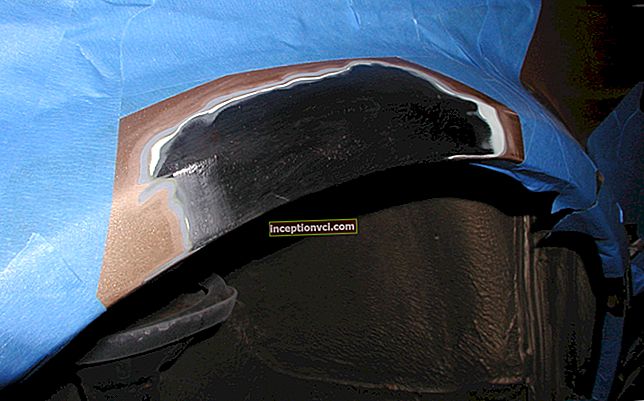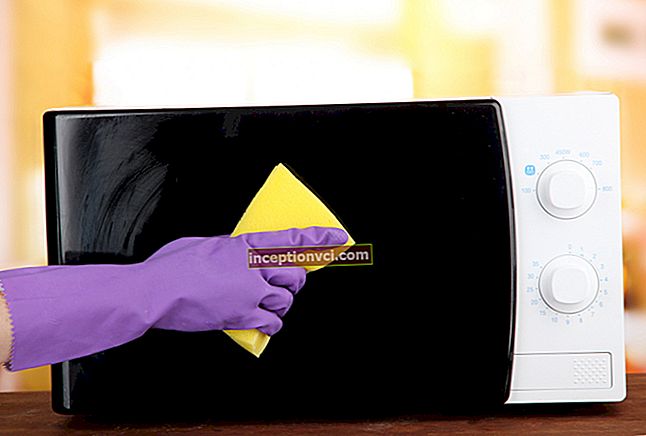Pentax * ist Ds

All those who consider themselves to be true lovers of photography sooner or later come to the conclusion that a compact (even a very high quality one) cannot be compared with a DSLR camera in terms of its capabilities. Many “filmmakers” who tried to shoot with digital cameras were disappointed, and not all of them could afford digital SLRs. Three years ago, the boundary (purely psychological at that time) was determined at $ 1000 for a body without a lens - this is an acceptable price for a person who does not make money with photography.
Not so long ago, the “psychological frontier” became real. A real DSLR - Canon EOS 300D - fell into the category “up to 1000”. Even with a heavily curtailed functionality and not the highest-quality case, but a real one. And she caused a revolution in amateur photography. Following Canon and Pentax, it released a "lightweight" version of its first digital SLR * ist D. Moreover, in terms of functionality, the Pentax * ist Ds is not much inferior to the older model (and in some ways even surpasses it). But overall, this smallest DSLR has become clearly beginner-oriented.
Design


Despite the fact that the camera has really become more compact, it has not lost in ergonomics and quality of performance. The body is plastic, but it is made of very high quality. The rigidity of the structure is provided by a metal "frame". The camera fits comfortably in the hand, the rubber grip prevents it from slipping out. To turn on / off the ring around the release button is used. Turn-on time is not a record, but quite acceptable - just over a second. Almost all settings are made through the menu. An exception is made only for exposure compensation, which is set by simultaneously pressing the corresponding button and rotating the wheel.
Focusing is possible either in fully automatic mode, or with forced selection of one of 11 points, or manually. The only way to activate the tracking autofocus is to select the “sports” program. The rest of the parameters can be changed through the menu.
In addition to traditional exposure modes, the disc also includes not quite ordinary ones, specially designed for beginners. "Standard" (in fact, a full machine gun) is indicated by a pictogram in the form of a smiling face. By turning the wheel, you can select the “flash off” mode - the same automatic mode, but the flash no longer jumps out. But Auto Pict is an original novelty. With this setting, the camera automatically selects the most suitable scene mode and the appropriate icon is displayed in the viewfinder.
This newbie orientation makes sense, of course. But sooner or later a situation arises when the automation does not cope - this is where all the wealth of settings comes in handy. An excellent version of the camera "for growth". For night shooting, the * ist Ds has everything you need: long exposures up to 30 sec, Bulb mode, 2 sec shutter lag (with mirror up front). The camera has an efficient noise reduction algorithm when working with long exposures. However, this process takes quite a long time, and the sharpness naturally decreases.
To shoot in a studio with pulsed light, you will have to buy a wireless light synchronizer - unlike * ist D, the younger model has lost the sync contact. In addition, there is no way to use a vertical feed handle. For the first time in a DSLR camera, pictures are recorded onto an SD card.
It is unlikely that this camera is suitable for reporting: the speed of continuous shooting is low, focusing is also not the fastest. But domestic household photographers, not spoiled by "Western" wages, no doubt, will be able to use it.
Optics
Good news for those who shot with a Pentax film camera or a domestic “Zenith”: all the latest lenses (KA, KAF and KAF2) are fully compatible with * ist Ds.Older K-mount lenses can also be used, but not all automatic modes are supported. If the old optics are not very fast, focusing problems may occur. Through adapter rings, you can install threaded optics and even medium format.
Especially for the release of this camera, the release of a new lens was also timed, the same compact and also at a quite budget price. It was with this “standard” zoom SMC PentaxMDA 18–55 / 3.5–5.6 AL that we took most of the test shots. Taking into account the crop factor, the focal length range is 27.5–84 mm. The sharpness was not the best. Detailing is only slightly superior to the most advanced compacts; vignetting is clearly visible at minimum focal length. This lens can be recommended as a starting lens with the prospect of moving to a higher quality one. For macro photography in our test we used the SMC Pentax DFA 50 mm Macro.
Picture
In the programmed mode, the expo system ran the tests without significant errors. Noise becomes noticeable only at ISO 800, so in low light, you can safely increase the sensitivity to 400 units. The color rendition is quite correct. Auto white balance works flawlessly in natural light, but adds a yellowish tint to complex artificial light.
The first item in the menu is to adjust the "Image tone". Of the two possible values ("bright" and "standard"), the first is selected by default. Judging by the results, when processing the image, the camera raises the brightness and applies an algorithm similar to the automatic curves in Photoshop.
We shot portraits on the street and in cafes with the “standard” setting, everything else with the “bright tone” setting. In the latter case, the pictures really look more convincing from the point of view of the average amateur and practically do not require modification.
We had complaints about sharpness and detail in low light conditions. This problem can be partially solved by raising the sharpness one stop. But in this case, sharpening artifacts become noticeable. Perhaps the option with subsequent processing on a computer is preferable here.
Verdict
Almost everyone who picked up * ist Ds called it the best family DSLR. It is both compact and lightweight, and at the same time has not lost at all in ergonomics. Of course, * ist Ds is also interesting because even without adapters it is possible to use inexpensive and high-quality domestic optics with it (though probably only in manual mode).
But, unfortunately, the image quality, which is quite acceptable for the amateur level, does not allow us to hope for a professional use of this camera.
Specifications (edit)
Sensor - CCD, 23.5 x 15.7 mm, 6.31 million pixels (6.1 effective)
Lens - full compatibility with lenses KA, KAF, KAF2; K mount lenses compatible with limitations
File format - JPEG (three quality levels), RAW
Focusing - phase detection method (SAFOX VIII), 11 zones, single frame, manual focus, spot
Exposition - auto, program, shutter speed and aperture priorities, manual, 5 scene programs, automatic program selection
Exposure metering - 16-zone, weighted average, point
Display - 2 inches, 210,000 pixels
Exposure compensation - ± 2 EV in steps of 1/3 or 1/2 EV, bracketing
ISO sensitivity - auto, 200, 400, 800, 1600, 3200
White balance - automatic, manual, 7 presets
Exposure range - 30-1 / 4000 sec, Vulb
Flash - built-in P-TTL with auto-lift function, hot shoe, sync 1/180 sec
Memory - SD
Food - 4xAA or 2xCR-V3 (included)
Weight - 505 g without batteries, 605 g with batteries
Dimensions (edit) - 125x92.5x66 mm
Interface - USB 2.0
Turning on - 1 second
Focusing- 0.5-2 seconds
White balance - very good
Aberrations - minor around the edges of the frame
Distortion - insignificant
Digital noise - at ISO 800 minimum, at ISO 3200 - strong
Autofocus and sharpness in general for the test - below the average
Special pluses - beginner-oriented modes, simple controls, Russian menu
Special cons - "blurry" pictures in low or non-standard lighting
Olympus E-300

Design


At first glance, the E-300 is a bit bewildering. How is it that the camera is a reflex camera, but the viewfinder window is shifted to the left of the lens axis. The body is much lower in height than other DSLRs, there is no such usual "hump" on the upper surface. All this is explained by the unusual design of the viewfinder - instead of the traditional pentaprism, a system of mirrors is used. The first (in the direction of the light from the lens to the eye) mirror deflects the rays to the side. And when the shutter is triggered, it slams like a gate from a strong wind. Perhaps this design is not only more compact, but also cheaper than the traditional one (of course, the democratic price of the camera led us to this idea). The viewfinder is bright and, which is nice, does not add any extra shades.
The body, with the exception of the top cover, is made of plastic, but, admittedly, of very high quality. The handle is rubberized and is almost ideal for a medium-sized hand.
E-300 is the second camera in the Four Thirds format, or 4/3. First of all, it is worth noting that Olympus began to build its digital SLR system from scratch, unlike competitors who use old developments and in most cases ensure compatibility with 35 mm optics.
The camera has a small LCD screen - only 1.8 inches diagonally. For the proprietary technology that is used for its manufacture, they came up with a special name HyperCrystal, and for good reason - the brightness and contrast are noticeably higher than usual, and the image is perfectly visible from almost any angle. You can work with the display even in bright sunlight. But it is difficult to assess the color and the correctness of the exposure from it - just because the brightness is greatly overestimated. It is safer to use the histogram to control exposure errors. The color screen also serves as an information screen, since there is no additional black-and-white screen (as on film cameras).
The mode wheel is traditionally located on the upper surface on the right. In addition to four standard exposure modes, it has five scene programs and the Scene item, which allows you to select another one of nine scenes from the menu.
Ergonomically, the E-300 is one of the best non-professional DSLRs in the class. Shooting information is perfectly readable on the bright screen. For all the most commonly used settings (white balance, sensitivity, flash modes, etc.) there are direct access buttons. When you press the corresponding button, the parameter value is highlighted in green and is adjusted by turning the wheel - there is no need to confirm the changes.
However, not all settings can be made directly with the push of a single button. Some of them are hidden in the “computerized” menu, which completely repeats the version used in Olympus compacts. In my opinion, this menu is one of the most unfortunate, but, in the end, you can get used to everything.
The E-300 turns on quickly, with low focus and shutter lag. Burst shooting speed is not the most impressive at present - 2.5 frames per second, no more than 4 frames in TIFF or RAW format. But the focusing mode in the machine is of interest, followed by manual adjustment by rotating the ring on the lens. Tracking and single-frame focusing are activated by half-pressing the shutter release button.
The built-in flash is thrown high to avoid the annoying red-eye effect.
One of the most intractable problems for owners of interchangeable-lens cameras is dust on the sensor. Even if you don't change the lens twenty times a day, dust will still find loopholes. For example, air is actively sucked in when zooming. Pros who shoot a lot and often change lenses clean the matrix once a month, or even more often. This procedure is expensive (if in the service) and dangerous for the life and health of the camera (if at home "on the knee"). So, Olympus is the only company that fights this scourge more or less successfully: it has built an ultrasonic mechanism that shakes the matrix into its DSLRs. In this case, the dust particles settle on the sticky tape.But in the event that the dust "stuck" to the matrix, you still have to do wet cleaning.
It was rather strange not to find a printed manual in the box with the camera. The kit contains only a short description, and for an in-depth study of all the subtleties (and, believe me, there are enough of them), you will have to use the PDF version on CD.
Optics
Since time immemorial, the quality of Olympus Zuiko professional optics has enjoyed a well-deserved respect. The OM series of film cameras was called nothing more than the “Japanese Leica”. For digital SLRs, optics are produced of no less high quality and, unfortunately, just as expensive. But specially for the budget E-300, two cheaper lenses were released: EZ 14-45 / 3.5-5.6 and EZ 40-150 / 3.5-4.5.
Of the third-party manufacturers, only Sigma has released three lenses: 18-50 / 3.5-5.6 DC, 18-125 / 3.5-5.6 DC and 55-200 / 4-5.6 DC. But perhaps Panasonic, which recently announced 4/3 support, will do something extraordinary - like a telezoom with Mega OIS and Leica lenses?
All 4/3 lenses are labeled with true focal lengths. To convert it in accordance with the angle of view to the equivalent of 35 mm optics, the focal length will have to be doubled. So, the lens with which we tested the camera, taking into account the crop factor, from the wide-angle 14–45 turns into the standard 28–90. For most subjects, this range is sufficient.
Capabilities of the "whale" lens for macro photography are very limited. But that is why the system technology is good, that everyone, having a more or less universal starter kit, will be able to supplement it with lenses and external flashes according to their needs and financial capabilities.
Picture
In terms of resolution, the Olympus E-300 significantly surpassed expensive compacts, but lost, for example, in the competition with the six-megapixel Konica Minolta Dynax 7D. Color reproduction is very good, but not perfect. Auto white balance works very well in natural light. Under fluorescent lighting without flash, skin tones become reddish, and with flash they become yellowish. Balance settings in Kelvin give a much more believable result.
Verdict
Overall, the Olympus E-300 turned out to be a surprisingly comfortable and very solid camera. Maybe after a traditional DSLR you will have to get used to it, but compared to pseudo-mirror cameras, the advantage in ergonomics is colossal.
Well, with very good image quality and a more than reasonable price, the prospects for the camera in the segment of amateur DSLRs are very bright. The matrix with a diagonal of 4/3 inches is, of course, twice as large in area as that installed in top compacts, but this is not enough for a radical qualitative leap.
Specifications (edit)
Sensor - CCD type 4/3 (Kodak), 17.3x13.0 mm, 8.9 million pixels (8 million effective)
Lens - interchangeable optics of standard 4/3, crop factor 2x
File recording - TIFF, JPEG, RAW (12 bit), RAW + JPEG
Burst shooting - 2.5 frames / sec, in RAW max. 4 frames
Focusing - three-point, single-frame, tracking, manual
Exposition - P / A / S / M, scene programs
Exposure compensation - -5 EV to +5 EV in steps of 1/3, 1/2, 1 EV
Display - 1.8 inches, high-contrast, high-brightness TFT LCD, 134,000 dots
ISO sensitivity - 100, 200, 400, manually 800 and 1600
White balance - cars, incandescent lamps (2x), cloudiness, shade, daylight, fluorescent light (3x), in Kelvin (2000-10,000), on a white sheet
Exposure range - 30-1 / 4000 sec, bulb (8 min)
Flash - built-in v / h 13, synchronization up to 1/180 sec, high-speed up to 1/4000; auto, suppressed eff. red-eye, forced, disabled, second curtain, slow sync; Hot-Shoe connector for external flash
Memory - CompactFlash card
Power supply - lithium battery BLM-1, 1500 mAh
Weight - 624 g (with battery)
Dimensions (edit) - 146.5x85x64 mm
Interface - USB
Turning on - 1.5 sec
Focusing - no more than 1 sec
White balance - very good
Aberrations - noticeable
Distortion - small
Digital noise - small in shadows at ISO 400, strong at ISO 800
Autofocus and sharpness in general for the test - excellent
Special pluses - ultrasonic mechanism for removing dust from the matrix
Special cons - only three focusing points, strong noise at high sensitivity









